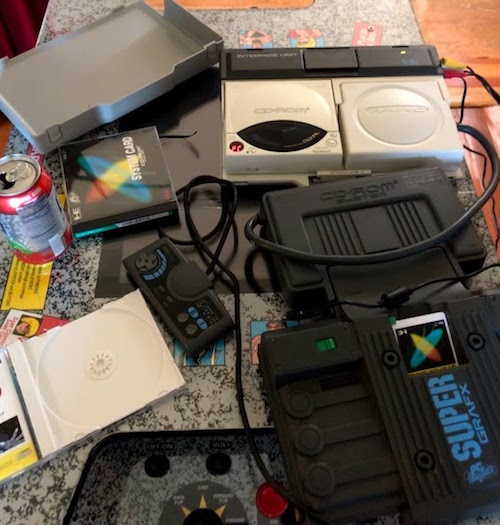-
Will it ever stop loading?! The Neo Geo CDZ!
Growing up in the late 90’s, there was one name that would instantly bring an “oh yeah, that’s cool, I think I’ve seen one of those around, not as cool as Mortal Kombat though” to kids’ voices: Neo Geo. But could you have that sort of arcade action in your home? If you had more money than God, perhaps! But what if you only had more money than the prophets, and the patience of a saint? Well, has SNK got a console for you!
-
What did we do to deserve the PC-FX? (and the PC-FX GA)
I’ve enjoyed digging into the curiosities surrounding NEC and Hudson Soft’s PC Engine consoles, from the LaserActive to the SuperGrafx to the Arcade Card to the forbidden combination. But this is where it ends: the successor to the PC Engine. The last console from NEC. The beautiful, infamous PC-FX. Oh, and the PC-FX GA! What’s with that?
-
Trademarks and Region Locks on the PC Engine/TurboGrafx
Region locks and licensing restrictions. Nintendo’s are famous; we’ve talked about Sega’s already. But what about everyone’s favorite third-place winner, NEC/Hudson’s PC Engine/TurboGrafx? Well, the short answer is, there aren’t any for the CD, and HuCards are incompatible. But stay tuned for the long answer…
-
Nicole gets a real computer! The Microsoft Z80 SoftCard!
So there I was, very happy with my Apple ][plus. But then I saw someone on the internet post, and it seems that my Apple is an overpriced box with a toy microcontroller for a CPU, while real computers use an Intel 8080, 8085 or Zilog Z80 to run something called “CP/M”… but I’ve already spent so much money on the Apple, so can I turn it into a real computer?
-
Space Ava 201 Digital Release!
So, the adventure started in July has come to an end. How did the project go? Where can I get the game? Do I need a SuperGrafx CD with dual Arcade Cards to play it? Will this give me a totally accurate understanding of quantum field theory? All your questions and more will be answered! Plus, stay tuned for a follow-up on coding for the PC Engine!
-
The Console That Wasn't: The SuperGrafx CD-- Let's make it real!
Hey kids! You’ve probably heard from those goons at Feka Corporation that the Sega CD 32X is the first overly complicated combination of consoles and CD add-ons in the entire console generation. But I’m bringing out the TRUTH about overly complicated consoles and CD add-ons! ADMIT IT! NEC did it first, and theirs was even more nonsensical and provided even less benefit to the end user!
-
Cassette-based multimedia! Can you learn a foreign language using BASIC?
Welcome back to my Atari 8-bit computers! Okay so first off it’s been over two years and I still haven’t fixed the floppy drive. But I have different magnetic media to talk about today! And we’re going to use this 8-bit computer for something other than games! Look forward to it!

